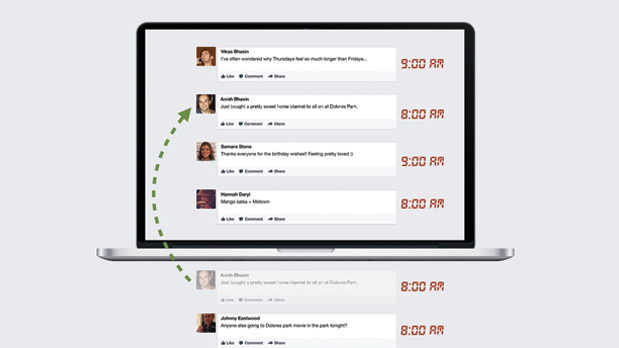
Facebook has made a subtle change to its main News Feed — the feed of stories that Facebook users see when they visit the site or open the app — that is, basically, built on the intuition of the team.
Around this time last year, Facebook's News Feed team — including News Feed head Chris Cox and engineer Lars Backstrom — was slightly frustrated by users, and themselves, missing out on News Feed posts. The way News Feed originally worked, was so: Whenever users open Facebook, all new stories since the last time they visited were ranked and shown in that order, above older stories. The ranking was determined by a mix of signals like comments, the relationship with the person, and what kind of update it is.
If you missed a story the last time you visited Facebook, tough luck — you would have to scroll through a lot of newer, and perhaps less important posts, to get to it. Hence, the update Facebook announced today, called Story Bump. Now, stories that weren't seen the last time around are thrown in with the most recent stories, and a new ranking is established.
"We knew there were better stories, if only [users] would actually scroll down," Backstrom said at an event explaining the new News Feed update. "After a few meetings with Chris and getting suggestions [from employees], we wanted to make it."
The updates to News Feed — detailed in a new blog and a meeting at Facebook's headquarters, which were both designed to offer a greater level of transparency to how Facebook makes changes to one of its most important products — come at a time when Facebook has faced some scrutiny in the press regarding how its News Feed operates.
The process for building those updates, revealed today, is basically a distilled version of the hacker ethos that happens at Facebook. That kind of engineering, which is quite common at Facebook, is what Cox calls "feature testing." In Cox's own words, "it starts with an intuition, and then it's hard-coded." Those features are then tested against Facebook employees, and then sometimes small parts of the population, depending on how big the change is.

Cox and his team turned on Story Bump a few weeks earlier, and overall the results saw a net positive change in the number of people reading News Feed stories with few complaints from other employees and from the group it tested against. So, what started as a bit of intuition ended up becoming a core part of the Facebook experience.
Another piece of "intuition" Backstrom suggested was which people users would "focus" on throughout the day. For example, if a user logs on at the beginning of the day and likes a post, odds are, that user is interested in that person, and Facebook will include that in the ranking algorithm that determines which News Feed stories are shown, and in what order. Again, this ended up in a slight positive bump in usage, so it made the cut.
The third tenet, however, that Backstrom explained today, was creating a sort of play-by-play from a specific person. Here's the intuitive part: If a user follows a friend giving a live play-by-play of a football game, it would make sense that every post that user makes about the game should show up in the News Feed. However, that conflicts a bit with the core ranking algorithm of the News Feed. That ended up with a slight negative bump, and it was "back to the drawing board," Backstrom said.

Granted, "intuition" isn't the full story when it comes to engineering. At least for News Feed, much of the ideas begin with suggestions or complaints about certain things in the feed, Backstrom said. Users also play a big part in suggesting changes.
But part of Facebook's hacker culture is a "move fast, break things" approach — which encourages rapid experimentation and, basically, throwing things against the wall and seeing if they stick.
And when 700 million people are visiting News Feed every day, Backstrom said, it makes it even easier to experiment, test, or trash ideas that don't work and apply little incremental updates that by the end of the year result in significant positive bumps in engagement.
